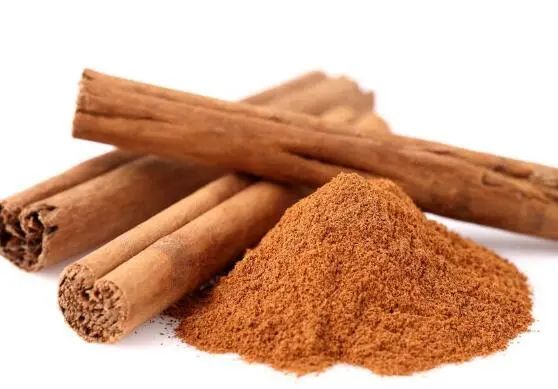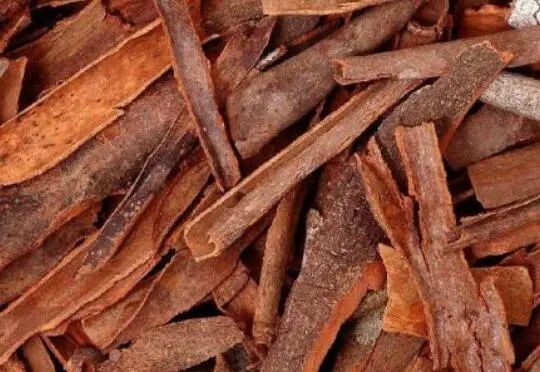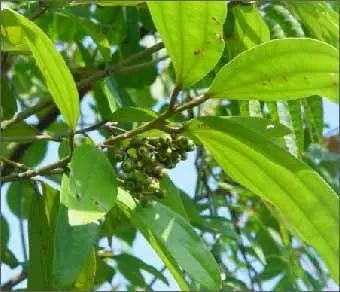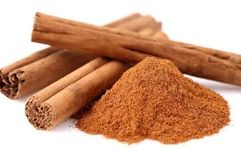————————————————————————————————————————————————————————————————–
Cinnamon is the dried bark of the cinnamon tree, a common spice and an effective traditional Chinese medicine (TCM) herb that can unblock meridians, dispel wind and dampness, and enhance flavor and aroma. Today, we will introduce the benefits and effects of cinnamon, as well as the contraindications when consuming it.

Benefits and Effects of Cinnamon
1. Sedative and Analgesic
Cinnamon is a TCM herb that can act as a sedative and analgesic. It contains natural active ingredients that, when absorbed by the body, can counteract excitement and provide pain relief. It is particularly effective in alleviating common neuropathic pain and joint pain, as its medicinal components directly affect the human central nervous system, reducing sensitivity to pain.
2. Prevention of Thrombosis
Consuming an appropriate amount of cinnamon can help prevent thrombosis. The volatile oils and other active components in cinnamon enhance the body’s own anticoagulant capacity when absorbed, increasing the activity of platelets in the blood and preventing harmful substances from damaging the myocardium. It helps maintain stable heart function and prevents the formation of blood clots.

3. Prevention of Gastritis
Regular consumption of cinnamon can also help prevent gastritis. Cinnamon contains natural medicinal components that inhibit the activity of Helicobacter pylori in the body, preventing this bacterium from damaging the gastric mucosa. It can prevent the occurrence of gastritis and regulate gastric acid secretion, providing relief for acid reflux and nausea.
Contraindications of Cinnamon
While cinnamon has excellent health benefits, it is a warming herb and should be avoided by individuals with yin deficiency and excessive heat, as well as those suffering from heat-related illnesses, as it may exacerbate their conditions. Additionally, excessive consumption of cinnamon can lead to symptoms of poisoning, such as nausea, vomiting, and dizziness, which can seriously harm health.
Warm TCM Herb: Cinnamon
Also known as: Yu Gui, Mu Gui, Jun Gui, Tong Gui
Cinnamon is an evergreen tree of the Lauraceae family, reaching heights of over 10 meters. Various parts of the cinnamon tree can be used medicinally. The bark is gray-brown, young branches are four-angled, covered with gray-yellow fuzz, and can be up to 13 mm thick, possessing a strong spicy aroma, commonly referred to as cassia. It is a valuable traditional Chinese medicinal material. The bark can be harvested when the tree is over 10 years old and has developed an oil layer in the phloem, with the best quality harvested in autumn (August to September). It is distributed in humid and hot regions such as Guangxi, Guangdong, Fujian, Taiwan, and Yunnan, with Guangxi having the highest yield.
Taste and Properties: Hot in nature, pungent and sweet in flavor; it enters the Kidney, Spleen, Heart, and Liver meridians.
Indications: It is used to tonify fire and assist yang, guide fire back to its source, disperse cold, and unblock meridians. It is indicated for impotence, cold in the uterus, cold pain in the abdomen, deficiency cold vomiting and diarrhea, cold pain in the lower back and knees, shortness of breath due to kidney deficiency, dizziness due to yang deficiency, cold hernia, amenorrhea, dysmenorrhea, etc.
Contraindications: Pregnant women should avoid it; cinnamon is hot in nature and is suitable for consumption in cooler seasons, but should be avoided in summer; those with yin deficiency and excessive heat, as well as those with blood heat and bleeding, should also avoid it; individuals with excessive menstruation, pelvic inflammatory disease, sore throat, and other heat-related illnesses should refrain from consuming it.
Summary from Ancient Texts:
From the “Compendium of Materia Medica”: It tonifies the five labors and seven injuries, opens the nine orifices, benefits the joints, nourishes essence, brightens the eyes, warms the lower back and knees, breaks up phlegm and masses, dispels blood stasis, treats wind-damp bi syndrome, and promotes the healing of muscles and bones.
Selected Formulas:
Formula 1
Ingredients: 5 grams of cinnamon powder
Preparation: Brew the cinnamon powder with warm water.
Dosage: Twice daily, for a course of 3 weeks.
Effect: Suitable for lumbar muscle strain.
Formula 2
Ingredients: Appropriate amounts of cinnamon and Plantago seeds.
Preparation: Grind the above herbs into a fine powder for later use.
Dosage: Fill the navel with the powder, cover with sterile gauze, and secure with adhesive tape.
Effect: Warms the middle, disperses cold, and stops diarrhea; suitable for cold damp diarrhea with watery stools.
Formula 3
Ingredients: 1 gram of cinnamon
Preparation: Wash the cinnamon, dry it, and grind it into powder.
Dosage: Swallow.
Effect: Suitable for stomach pain and vomiting of sour fluid.
Formula 4
Ingredients: 5 grams of cinnamon, 3 grams each of clove and costus root.
Preparation: Grind the three herbs into a fine powder and pack into a sterile gauze bag for later use.
Dosage: Apply the herb bag to the navel once daily.
Effect: Warms the spleen and stops diarrhea; suitable for abdominal pain and diarrhea due to spleen and stomach deficiency cold.
Formula 5
Ingredients: Equal parts of cinnamon and dried ginger.
Preparation: Grind the above herbs into powder.
Dosage: Apply the powder to a plaster and stick it on the navel.
Effect: Warms the middle and alleviates pain; suitable for chronic abdominal pain caused by cold evil.
Formula 6
Ingredients: 90 grams of cinnamon, 30 grams each of dried ginger and miscellaneous hair ash.
Preparation: Grind the above herbs into powder and store in a clean container.
Dosage: Twice daily, 3 grams each time, taken with rice soup.
Effect: Suitable for nosebleeds.
Recommendation: For more folk TCM health information, long press the finger to scan the QR code below↓↓↓↓↓


The knowledge passed down from our ancestors is often simple yet practical!
If you find it useful, save it and share it with your friends; it can truly help everyone!
Disclaimer: This article is reproduced from the internet and published materials. If there is any infringement, please contact us for removal. The various prescriptions and remedies mentioned are for informational sharing only and do not constitute medical advice, recommendations, or guidance. Please use them under the guidance of a physician.

